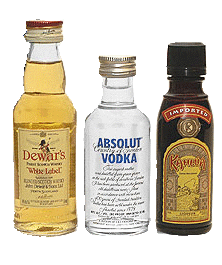A Little Alcohol Problem
For much of the late 19th and early 20th centuries, the United States had an ongoing debate over the proper legal status of alcohol. Famously and disastrously, the nation enacted a constitutional amendment to deal with the issue and then passed a law that prohibited “intoxicating beverages.” But the history of America’s battles against booze extends far wider and deeper than Prohibition. Each state has its own rules, some of which were strange and, likely, counterproductive.
Just ask South Carolina.
In 1892, prohibitionists in the state won a referendum calling for a state-wide ban on alcohol. The state legislature treated the referendum as guidance instead of a command, and instead tried to find a happy medium between free-flowing alcohol and an outright ban. It started what was called the South Carolina Dispensary, a government-owned and operated total monopoly on alcohol sales. The Dispensary system operated in the state for about twenty years before the prohibition movement gained enough steam to end sales of liquor in the state and ultimately, the nation as well. And while that waned over time, South Carolina still had a very restrictive view on alcohol sales throughout the 20th century. Even after Prohibition, South Carolina’s alcohol law still was one of the most restrictive in the nation. For example, even as recently as 50 years ago, they barred alcohol sales in restaurants.
There was a workaround though — BYOB. Restaurants were barred from selling drinks but could allow patrons to bring their own drinks with them — and that practice became the norm until 1973. That year, in the words of the New York Times, “restaurant owners and others persuaded voters to change the law by arguing that brown-bagging caused raucous behavior and that patrons drank too much to avoid having to take home partly filled bottles.” Voters turned to an alternative, allowing restaurants (and bars) to sell alcohol, but only to a pre-ordained limit. The method to establish that limit? Airplane-sized bottles of alcohol, like the ones below.

A 2004 article in USA Today explained: “South Carolina is the only state that does not allow bartenders to pour drinks from regular-size bottles of liquor. Instead, for every drink, they have to open 1.7-ounce bottles of booze like the ones served on airplanes.” The rule, effectively, put a cap on the amount of liquor in each drink — few bartenders were going to open a second mini-bottle in order to add more alcohol, and few patrons were willing to pony up for the second bottle anyway. But it also put a de facto minimum on the amount of alcohol used per drink. As bartenders had to open a new bottle for every drink, they made sure to use all of it — why skimp on the booze if it’s going down the drain if unused?
The net result was that drinks were made with 1.7 ounces of liquor or, in the case of some mixed drinks, a multiple of that. Per the above-linked New York Times article, critics of the mini-bottle requirement pointed out a that in many other states, the amount of alcohol in a typical drink was actually lower than that magic 1.7-ounce number. In effect, South Carolina’s restrictions on alcohol resulted in more alcohol per drink, not less, earning the state the reputation of “serving the nation’s strongest drinks” — all in the name of moderation.
Oops.
South Carolina ended the mini-bottle rule in 2006.
Bonus Fact: While Prohibition is long gone, some of its advocates still remain. The most formal example is the Prohibition Party, which was established in 1869 and remains active and fields Presidential candidates every four years. As of August 2014, its national chairman was the appropriately-named Greg Seltzer.
From the Archives: Hoofing It: A creative way around Prohibition.
Related: Minibottles — for a doll house. Because even Barbie should have the right to an aperitif.
